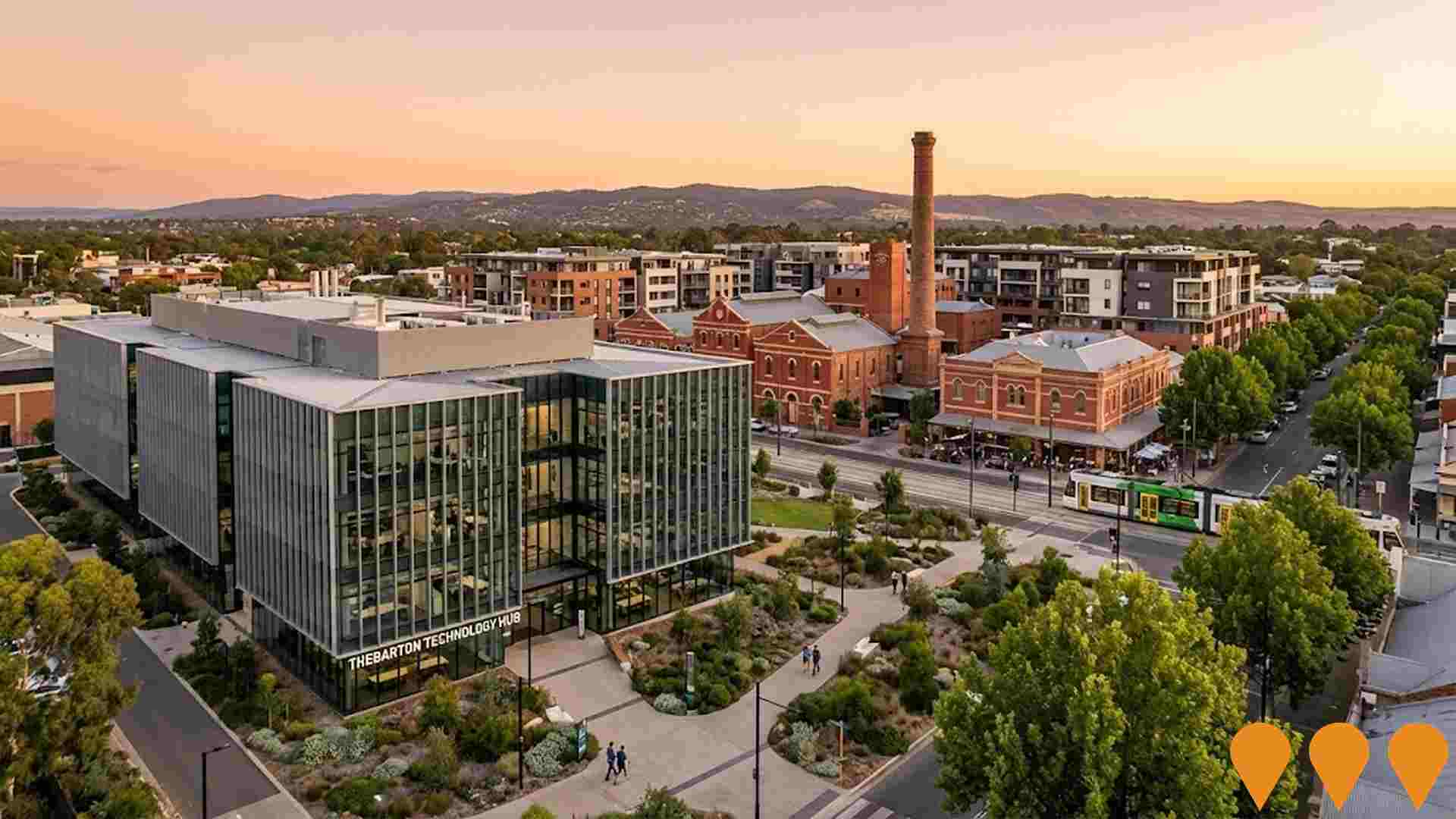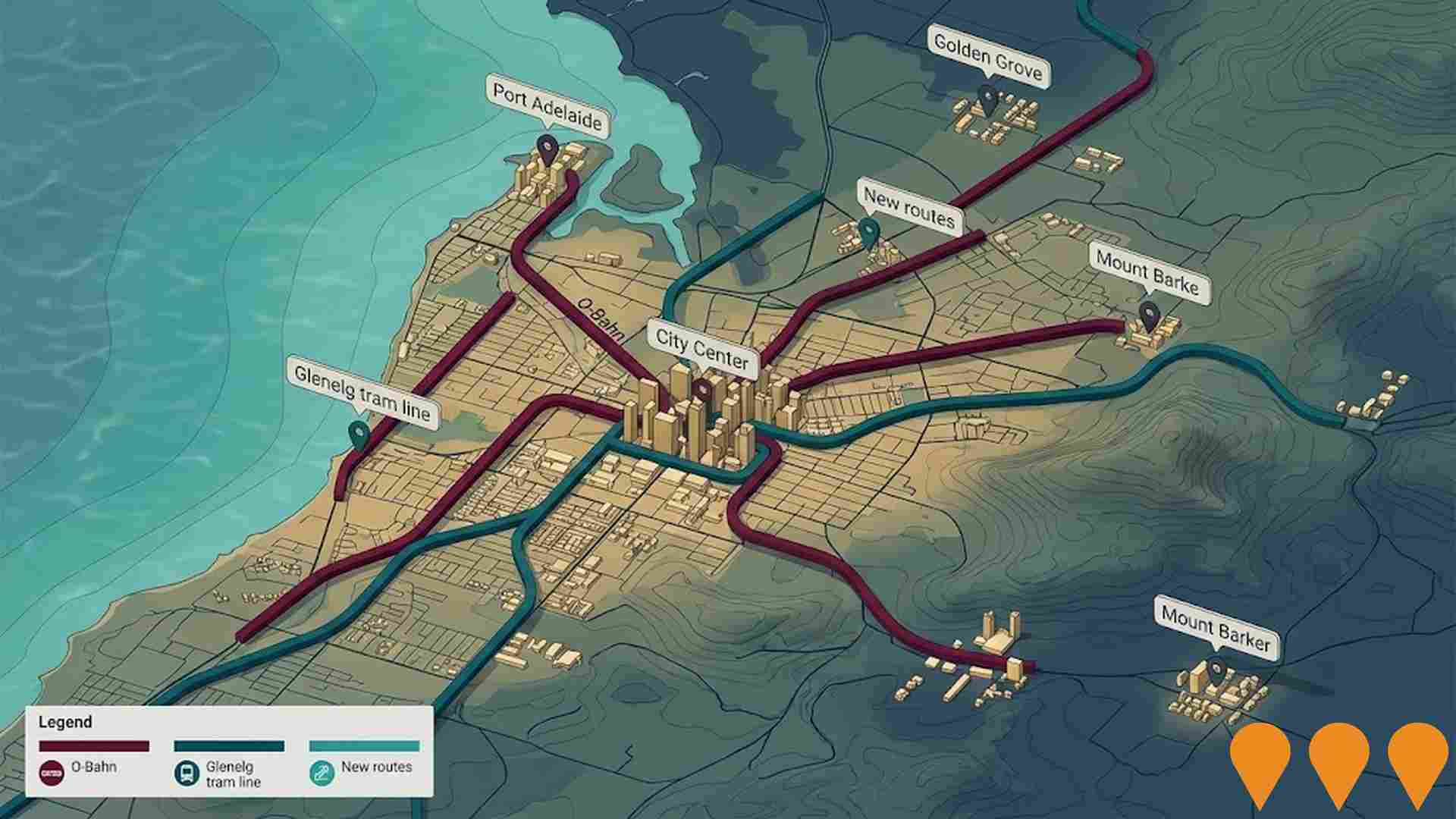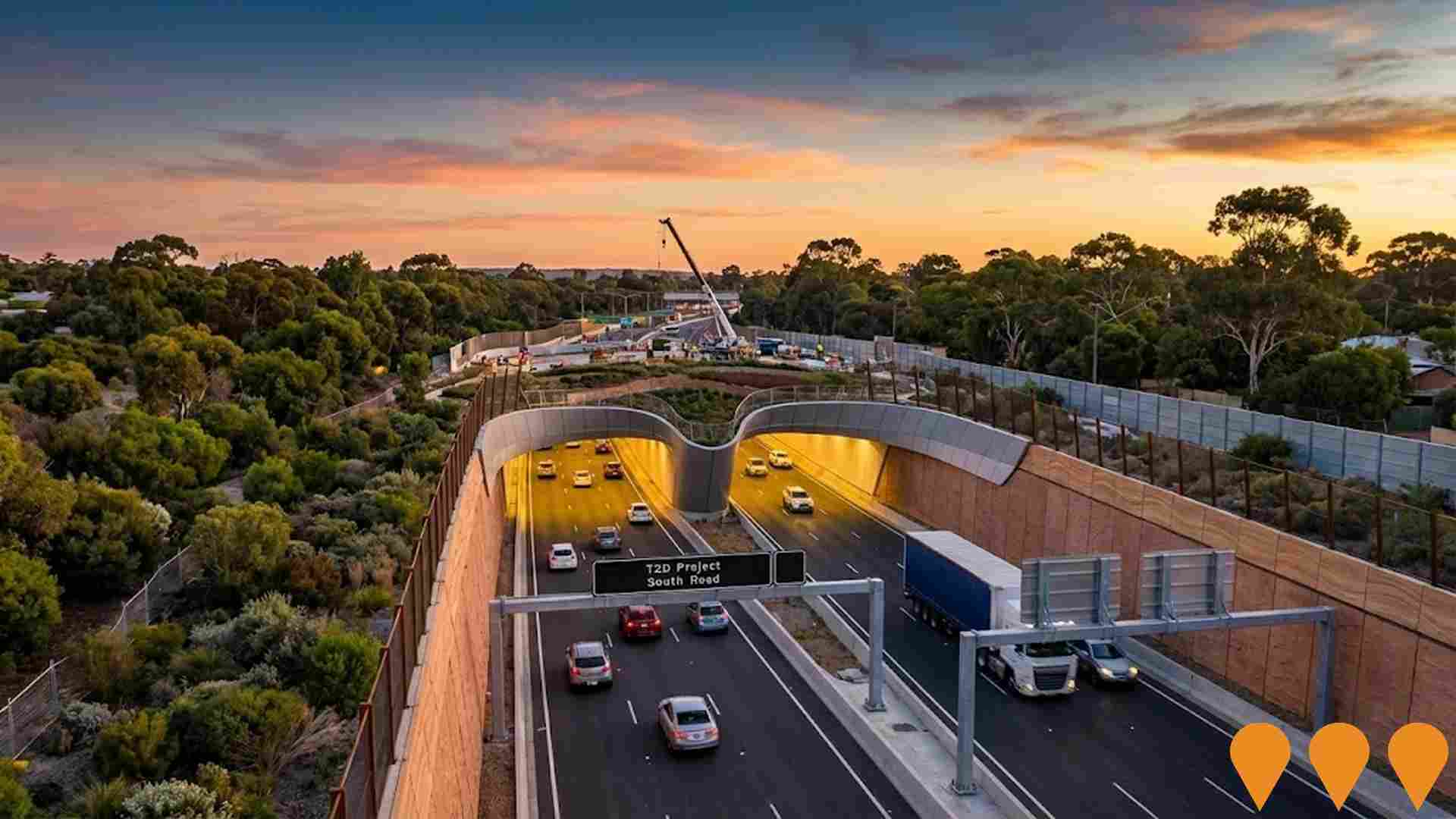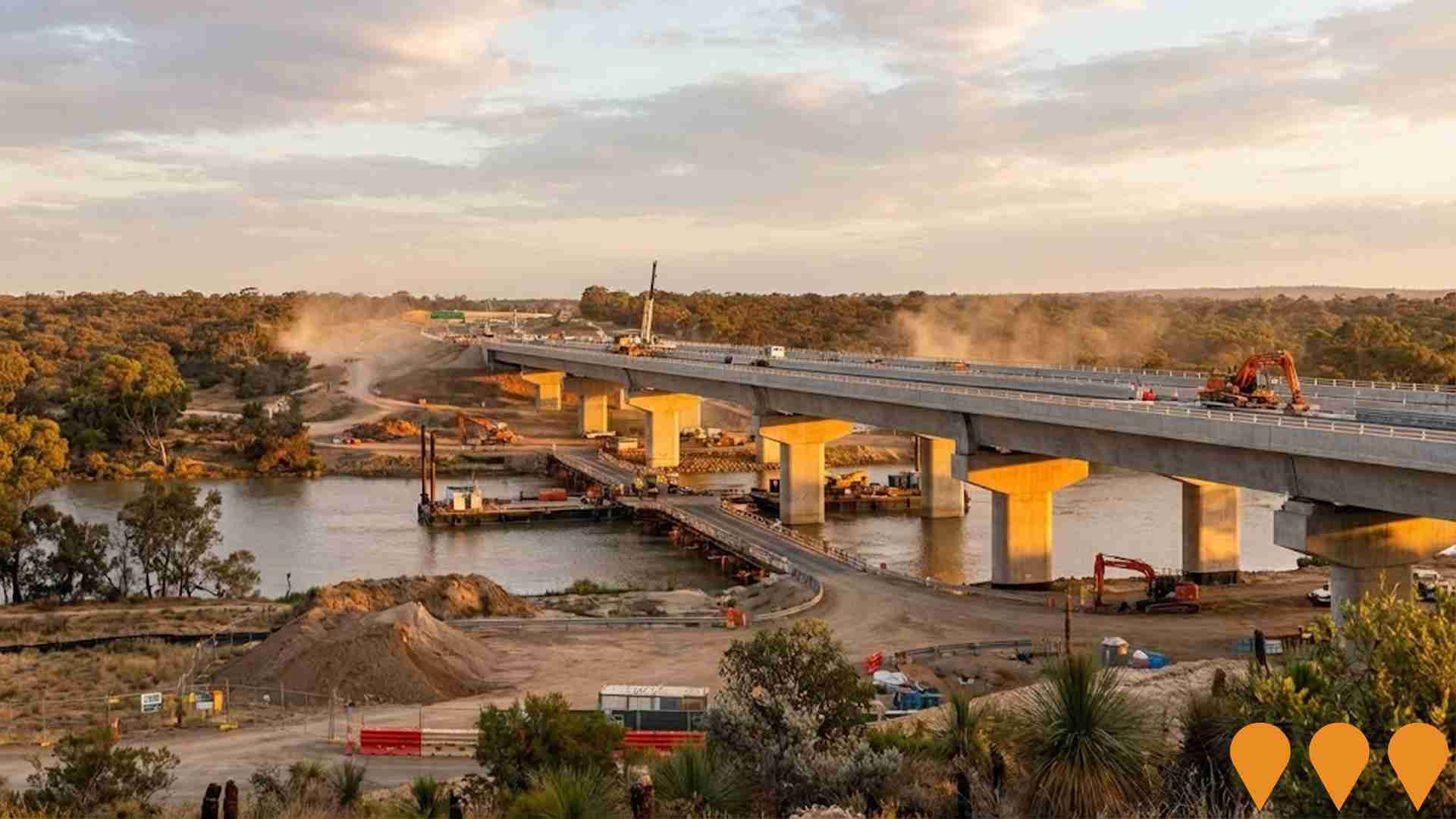Chart Color Schemes
est. as @ -- *
ABS ERP | -- people | --
2021 Census | -- people
Sales Activity
Curious about local property values? Filter the chart to assess the volume and appreciation (including resales) trends and regional comparisons, or scroll to the map below view this information at an individual property level.
Find a Recent Sale
Sales Detail
Population
Population growth drivers in Fulham are strong compared to national averages based on AreaSearch's ranking of recent, and medium to long-term trends
Fulham's population, as per AreaSearch's analysis, is approximately 3,129 as of August 2025. This figure represents an increase of 209 people since the 2021 Census, which reported a population of 2,920. The change is inferred from the estimated resident population of 3,124 in June 2024 and an additional 14 validated new addresses since the Census date. This results in a population density ratio of 2,370 persons per square kilometer, placing Fulham in the upper quartile relative to national locations assessed by AreaSearch. Fulham's growth rate of 7.2% since the 2021 census exceeds both the state average (6.7%) and that of its SA3 area, indicating it as a growth leader in the region. Overseas migration contributed approximately 64.8% of overall population gains during recent periods.
AreaSearch's projections for Fulham are based on ABS/Geoscience Australia data released in 2024 with a base year of 2022 for each SA2 area. For areas not covered by this data and years post-2032, the SA State Government's Regional/LGA projections by age category, released in 2023 using 2021 data, are adopted with adjustments made via a weighted aggregation method from LGA to SA2 levels. Looking ahead, Fulham is projected to experience above median population growth nationally, with an expected increase of 511 persons by 2041 based on the latest population numbers, translating to a total gain of 16.2% over these 17 years.
Frequently Asked Questions - Population
Development
Recent residential development output has been above average within Fulham when compared nationally
Fulham has seen approximately 33 new homes approved annually over the past five financial years, totalling 166 homes. In FY26 so far, 10 approvals have been recorded. Over these five years, an average of 1.6 new residents per year per dwelling constructed has been observed. The average construction value for new dwellings is $443,000.
This financial year, $1.2 million in commercial approvals have been granted, indicating a predominantly residential focus. Compared to Greater Adelaide, Fulham has seen 72.0% more construction activity per person, offering buyers greater choice and reflecting robust developer interest in the area. New building activity comprises 93.0% standalone homes and 7.0% attached dwellings, sustaining Fulham's suburban identity with a concentration of family homes. With around 96 people per approval, Fulham reflects a developing area. Population forecasts indicate that Fulham will gain approximately 506 residents by 2041.
At current development rates, new housing supply is expected to comfortably meet demand, providing good conditions for buyers and potentially supporting growth beyond current population projections.
Frequently Asked Questions - Development
Infrastructure
Fulham has emerging levels of nearby infrastructure activity, ranking in the 29thth percentile nationally
No infrastructure changes significantly affect an area's performance. AreaSearch identified zero projects likely impacting this area. Notable projects include Harbour Town Premium Outlets Adelaide Expansion, Thebarton Technology Hub, North South Corridor, and River Torrens to Darlington (T2D) Project.
Professional plan users can use the search below to filter and access additional projects.
INFRASTRUCTURE SEARCH
 Denotes AI-based impression for illustrative purposes only, not to be taken as definitive under any circumstances. Please follow links and conduct other investigations from the project's source for actual imagery. Developers and project owners wishing us to use original imagery please Contact Us and we will do so.
Denotes AI-based impression for illustrative purposes only, not to be taken as definitive under any circumstances. Please follow links and conduct other investigations from the project's source for actual imagery. Developers and project owners wishing us to use original imagery please Contact Us and we will do so.
Frequently Asked Questions - Infrastructure
Thebarton Technology Hub
A key development for the City of West Torrens, focusing on attracting and growing bioscience, technology, and advanced manufacturing companies. The broader area includes the University of Adelaide's Thebarton Campus. The City of West Torrens' Economic Development Plan supports the investigation of establishing a digital hub and fast broadband to industrial precincts. The former West End Brewery site (now called Southwark Grounds) is undergoing a major $1 billion mixed-use masterplan by Renewal SA, with construction expected to start in mid-2025.

Harbour Town Premium Outlets Adelaide Expansion
Major redevelopment of Adelaide's only outlet shopping centre featuring the new 'Harbour Town Eats' dining precinct, upgraded amenities, renewed storefronts, and enhanced landscaping. The project introduces new premium brands and improved facilities.

Enabling Infrastructure for Hydrogen Production
Australia has completed the National Hydrogen Infrastructure Assessment (NHIA) to 2050 and refreshed its National Hydrogen Strategy (2024). The programmatic focus has shifted to planning and enabling infrastructure through measures such as ARENA's Hydrogen Headstart and the Hydrogen Production Tax Incentive (from April 2025). Round 2 of Hydrogen Headstart consultation occurred in 2025. Collectively these actions aim to coordinate investment in transport, storage, water and electricity inputs linked to Renewable Energy Zones and priority hubs, supporting large-scale renewable hydrogen production and future export supply chains.

Adelaide Public Transport Capacity and Access
State-led program work to increase public transport capacity and access to, through and within central Adelaide. Current work is focused on the City Access Strategy (20-year movement plan for the CBD and North Adelaide) and the State Transport Strategy program, which together will shape options such as bus priority, interchange upgrades, tram and rail enhancements, and better first/last mile access.

Bulk Water Supply Security
Nationwide program led by the National Water Grid Authority to improve bulk water security and reliability for non-potable and productive uses. Activities include strategic planning, science and business cases, and funding of state and territory projects such as storages, pipelines, dam upgrades, recycled water and efficiency upgrades to build drought resilience and support regional communities, industry and the environment.

River Torrens to Darlington (T2D) Project
The River Torrens to Darlington (T2D) Project delivers the final 10.5 km section of Adelaide's North South Corridor, creating a 78 km non stop, traffic light free motorway between Gawler and Old Noarlunga. The project combines southern and northern twin three lane tunnels (around 4 km and 2.2 km) with lowered and surface motorway, new connections at key intersections such as Anzac Highway and Darlington, and upgraded walking and cycling paths and green spaces along South Road. Early and surface works are underway, tunnel boring machines are arriving from late 2025, tunnelling is expected to start in the second half of 2026, and the project is planned for completion by 2031.

North South Corridor
The North-South Corridor in Australia, a 78 km non-stop motorway from Gawler to Old Noarlunga through Adelaide, includes several projects like the Southern Expressway and Darlington Upgrade. Completion expected by 2031.

The Queen Elizabeth Hospital Redevelopment Stage Three
Stage Three of The Queen Elizabeth Hospital's redevelopment in Adelaide will introduce new clinical buildings, featuring an emergency department, operating theatres, an ICU, rehabilitation facility, and more, improving local healthcare services.

Employment
The labour market in Fulham shows considerable strength compared to most other Australian regions
Fulham has an educated workforce with significant representation in essential services sectors. Its unemployment rate is 2.6%, lower than Greater Adelaide's 4.0%.
In the past year, employment grew by 2.4%. As of June 2025, 1,651 residents are employed, with a local unemployment rate of 1.4% and workforce participation similar to Greater Adelaide's 61.7%. Key industries include health care & social assistance, construction, and education & training. Construction employment is particularly high at 1.2 times the regional level, while administrative & support services employ just 2.4% of local workers, below Greater Adelaide's 4.0%.
Limited local employment opportunities are suggested by Census data. Between June 2024 and June 2025, employment increased by 2.4%, labour force grew by 3.3%, and unemployment rose by 0.8 percentage points. In contrast, Greater Adelaide saw employment rise by 2.1% with a marginal increase in unemployment. Jobs and Skills Australia's national employment forecasts from May 2025 project overall growth of 6.6% over five years and 13.7% over ten years. Applying these projections to Fulham's industry mix suggests local growth of approximately 6.7% over five years and 13.9% over ten years, though these are simple extrapolations for illustrative purposes only.
Frequently Asked Questions - Employment
Income
The economic profile demonstrates above-average performance, with income metrics exceeding national benchmarks based on AreaSearch comparative assessment
AreaSearch's latest postcode level ATO data for financial year 2022 indicates that income in Fulham is higher than average nationally. The median income was $54,139 while the average income stood at $70,158. In contrast, Greater Adelaide had a median income of $52,592 and an average income of $64,886. Based on Wage Price Index growth of 12.83% since financial year 2022, current estimates as of September 2025 would be approximately $61,085 for median income and $79,159 for average income. Census 2021 income data shows that incomes in Fulham cluster around the 50th percentile nationally. The income distribution reveals that 28.9% of residents (904 individuals) fall within the $1,500 - 2,999 earnings band, consistent with broader regional trends showing 31.8% in the same category. After housing costs, residents retain 87.0% of their income, reflecting strong purchasing power. The area's SEIFA income ranking places it in the 7th decile.
Frequently Asked Questions - Income
Housing
Fulham is characterized by a predominantly suburban housing profile, with above-average rates of outright home ownership
Dwelling structure in Fulham, as evaluated at the latest Census, comprised 79.0% houses and 21.1% other dwellings. In Adelaide metro, this was 63.9% houses and 36.2% other dwellings. Home ownership in Fulham was 43.0%, with dwellings either mortgaged (33.3%) or rented (23.6%). The median monthly mortgage repayment was $2,000, higher than Adelaide metro's $1,745 and the national average of $1,863. The median weekly rent was $315, lower than Adelaide metro's $310 and the national figure of $375.
Frequently Asked Questions - Housing
Household Composition
Fulham has a typical household mix, with a higher-than-average median household size
Family households make up 68.9% of all households, including 33.2% couples with children, 24.8% couples without children, and 9.5% single parent families. Non-family households account for the remaining 31.1%, with lone person households at 28.9% and group households comprising 1.7%. The median household size is 2.5 people, larger than the Greater Adelaide average of 2.3.
Frequently Asked Questions - Households
Local Schools & Education
Educational attainment in Fulham aligns closely with national averages, showing typical qualification patterns and performance metrics
Educational qualifications in Fulham trail regional benchmarks, with 29.7% of residents aged 15+ holding university degrees compared to 35.4% in the SA3 area (Australian Bureau of Statistics, Census 2016). Bachelor degrees are the most common, held by 22.0% of residents, followed by postgraduate qualifications at 4.6% and graduate diplomas at 3.1%. Vocational credentials are prominent, with 32.0% of residents aged 15+ holding such qualifications - advanced diplomas at 11.7% and certificates at 20.3%. Educational participation is high, with 29.2% of residents currently enrolled in formal education.
This includes 10.5% in primary education, 8.6% in secondary education, and 5.8% pursuing tertiary education (Australian Bureau of Statistics, Census 2016). Educational facilities appear to be located outside Fulham's immediate boundaries, requiring families to access schools in neighboring areas.
Frequently Asked Questions - Education
Schools Detail
Nearby Services & Amenities
Transport
Transport servicing is good compared to other areas nationally based on assessment of service frequency, route connectivity and accessibility
Fulham has 14 active public transport stops, all of which are bus stops. These stops are served by 17 different routes that collectively facilitate 900 weekly passenger trips. The accessibility of these services is rated as excellent, with residents on average being located 166 meters from the nearest stop.
Each route operates an average of 128 trips per day, which translates to approximately 64 weekly trips per individual stop.
Frequently Asked Questions - Transport
Transport Stops Detail
Health
Fulham's residents are healthier than average in comparison to broader Australia with a fairly standard level of common health conditions seen across both young and old age cohorts
Fulham residents have shown relatively positive health outcomes, with common conditions seen across both young and old age groups. Private health cover is high at approximately 54% of the total population (~1,702 people), compared to 51.8% in Greater Adelaide.
The most prevalent medical conditions are arthritis (affecting 8.6% of residents) and asthma (6.3%), while 70.9% report being completely clear of medical ailments, similar to the 70.9% across Greater Adelaide. As of 2021, 22.9% of Fulham residents are aged 65 and over (715 people), higher than the 17.6% in Greater Adelaide. Health outcomes among seniors are above average, mirroring those of the general population.
Frequently Asked Questions - Health
Cultural Diversity
Fulham was found to be more culturally diverse than the vast majority of local markets in Australia, upon assessment of a range of language and cultural background related metrics
Fulham's population consists of 23.1% born overseas, with 18.9% speaking a language other than English at home. Christianity is the predominant religion in Fulham at 56.8%, compared to 46.1% across Greater Adelaide. The top three ancestry groups are English (25.7%), Australian (22.5%), and Italian (10.1%).
Notably, Greek ethnicity is higher in Fulham at 4.2% than regionally at 6.1%. Croatian ethnicity is also higher at 1.2%, compared to the regional figure of 0.6%. Polish ethnicity stands at 1.0% in Fulham, slightly higher than the regional average of 0.9%.
Frequently Asked Questions - Diversity
Age
Fulham hosts an older demographic, ranking in the top quartile nationwide
The median age in Fulham is 44 years, which is higher than Greater Adelaide's average of 39 years and also above Australia's median age of 38 years. In comparison to Greater Adelaide's average, the percentage of people aged 85 and over is notably higher at 7.0% in Fulham, while those aged 25 to 34 are under-represented at 8.0%. According to the 2021 Census, the population of children aged 0 to 4 has increased from 4.2% to 5.0%, whereas the percentage of people aged 25 to 34 has decreased from 9.4% to 8.0%. By 2041, significant demographic changes are projected for Fulham. The population of those aged 45 to 54 is expected to grow by 118 people (30%), from 391 to 510. Conversely, the populations of children aged 0 to 4 and adults aged 55 to 64 are forecasted to decrease.



